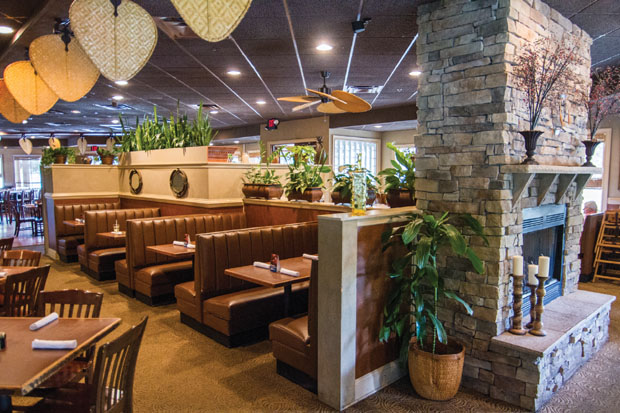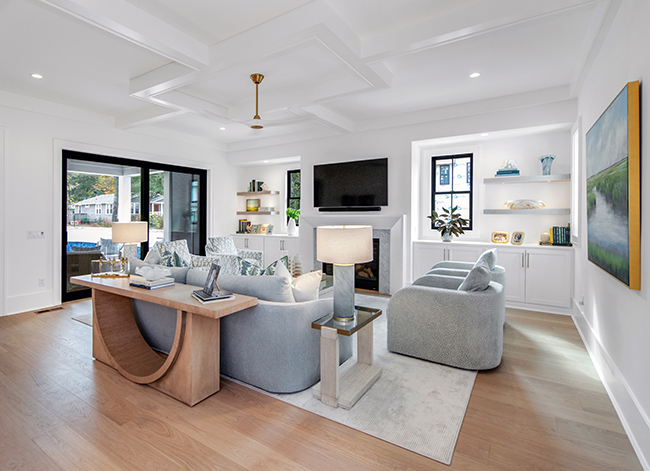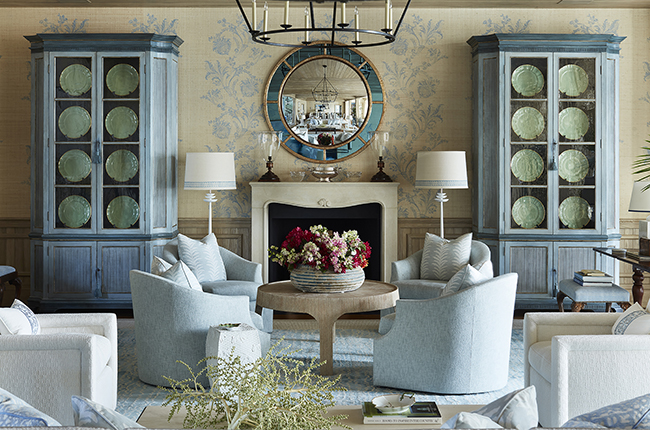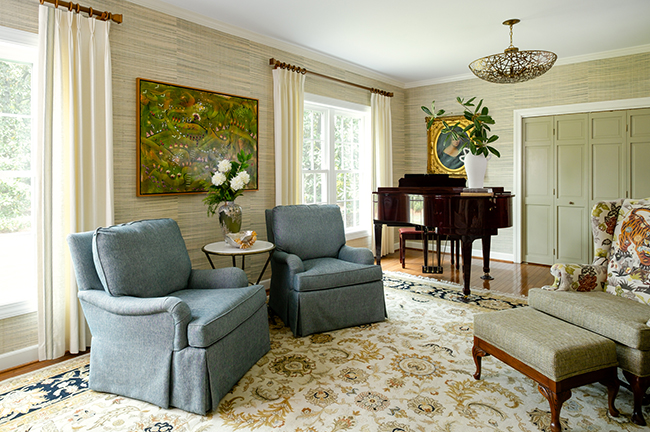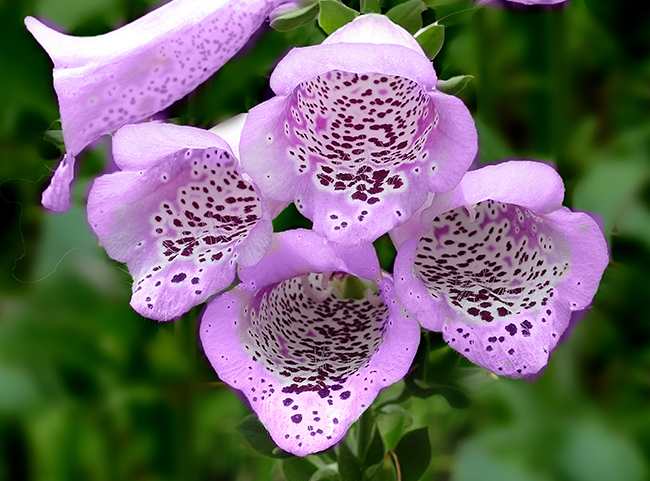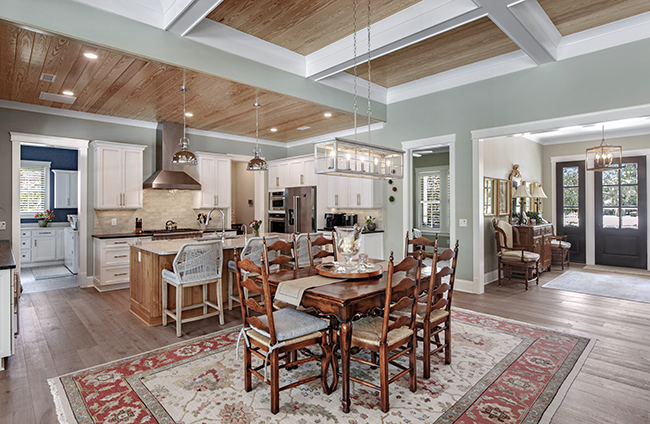A Grounded Garden
12 Jul 2014
Water is at the center, and this garden and its gardener work to reflect that sentiment
By JAMIE PENN Photos by GARY BREECE
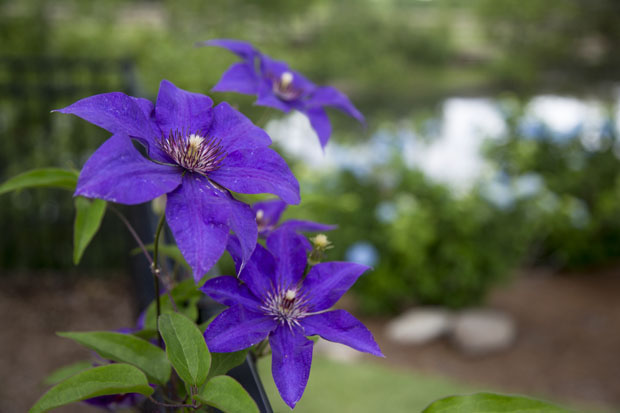
Landfall is a big, sprawling, prestigious place, with big, beautiful gardens, lots of manicured roses, and thousands of hand-pruned boxwoods. But, gardeners like Jo Weaver, are few and far between.
Weaver is a native Wilmingtonian. She grew up in the Myrtle Grove area and comes from a long line of gardeners. She definitely has her share of boxwoods and glowing roses, but she doesn't do azaleas (well, not many). She's crazy about anything perennial (especially the "come-alongs" that have come from gardens of family and friends), is essentially anti-annual, and until this year, has had extensive raised-bed vegetable gardens drooping over with summer harvests just behind her home since she and her husband built the place eight years ago. And to go a step further, she sends the comet fish (a type of goldfish named for its comet-like tail) in her water feature off to what she calls, "fishy boarding school" at a nearby aquatics nursery for the winter.
"One just had babies!" Weaver said, standing over the low, circular, slate-capped water feature overlooking the large pond in front of her house. "And they're white! Do you know how rare it is for a comet fish to have all white babies?"
Louisa Trigg Canady, local Wilmington landscape designer and aquatics specialist, has a full scale aquatics nursery where she cares for the exotic water plants, koi, and many goldfish that she uses in the water features she designs, builds and maintains.
“Louisa is brilliant,” said Weaver.
Classic Landscapes was responsible for the construction of the water feature, designed to mimic the pond to the extent that it’s almost indiscernible from certain viewpoints. Canady helps make it a work of art through maintenance and plant design.
The water lilies, the majestic blooms of lotuses, and other tropicals that will soon come back, give sufficient cover for the many active comet fish that keep the algae under control and make Weaver smile. The feature is surrounded at the base by a bed of perennials, softening the concrete and stone structure, nearly eight feet in diameter. The water garden is a needed centerpiece both separating lines of symmetry and gathering them together at a soft, edgeless juncture, like a guidepost.
“I wasn’t going to do fish,” she said. “It’s just more natural, though. They keep me from having to dump chemicals in it.”
Weaver believes in leaving as shallow a footprint as possible. While the majority of the garden adheres to a linear, symmetrical and religiously manicured look, the beds lining the pond behind the Nicholas Golf Course best mirror her gardening ideology.
Weaver declares herself a “water snob”. She believes in planting those varieties that can take care of themselves where they’re planted, and can perform year after year without a lot of fuss. Perennials like flag irises and siberians, muscari, daffodils, milkweed, canna lilies, texas star hibiscus, joe pye-weed, liatrus, mexican petunia and coneflowers seem tickled, soaking up water and nutrients at the pond’s edge. Weaver says the perennial garden flaunts a wash of consistent color eight months a year.
“Who needs annuals?” Weaver says. “They destroy your soil and waste so much water.”
Gardener Trey Hughes, of Hughes Gardening, has worked with Weaver for the last four years and says he’s tried hard to follow her lead.
“Jo kind of schooled me about all the different perennials,” Hughes said.
Hughes says all of their specimen plants, including the varieties of baptista in the back shade garden come from the Transplanted Garden in downtown Wilmington.
“If they don’t have it, they know where to find it,” Hughes said. “And there’s not a garden question they can’t answer.”
Weaver has an extensive, and quite fabulous rose garden, cared for by Witherspoon Rose Service, that creates a colorful backdrop for the water feature, polishing off the ornate setting. Weaver’s favorite is a hot pink hybrid tea, called ‘Electron’.
She and Hughes have other plans for the rose garden, though.
“We’re going to try a new product, called the Bayer program. It’s a systematic approach. We’d use David Austin heirloom roses which are much less susceptible to all the things in the south, like blackspot,” Weaver said.
From the side garden with towering, clumping bamboo, and the shade garden in the back and side yard, Weaver has most southern specimens one could conjure, from endless climbers - roses, jasmine, clematis, and lady banks, to nearly every blooming shade plant the south can boast, Weaver’s love of gardens shines through. In the back by the entrance, Weaver’s handmade (by her hands) oyster shell bird bath awaits avian guests.
Weaver and her husband will move soon to their property in Pender County, where they’re currently building a home. Her vegetable garden was put to bed last year, and soon, the many “come alongs” that have seen several generations will be packed up.
“My aunt Mary has been gardening the same perennial bed for thirty years and can’t really do it anymore. It’s bitter sweet. One garden is ending. But, we’re carrying it on. Many others are beginning as a result.”
Just Ask Tom
Tom Ericson, from The Transplanted Garden, has some great tips for sweating out the summer
in the garden this year.
WM: What time of day should gardeners water in the heat of the summer?
TE: It is best to water early in the day, or later in the afternoon. This way less of the water that you are using will evaporate or blow off target before it hits the plants and the soil you are trying to moisten. Do not water in the middle of the night. When leaves sit wet overnight with warm temperatures, you run the risk of all sorts of diseases and bacteria causing leaf spots.
WM: What are the hardiest herbs that sustain themselves well in July and August?
TE: Most herbs are fairly good all summer, the key thing is proper placement and fertilizing. Plants like Basil, Tarragon and Parsley, really benefit from a bit of shade in the heat of the afternoon. The leaves won’t get quite so tough. Rosemary, Oregano and Thymes can take the full sun, but keep them evenly moist and well fed. The more you cut them, the more they want to re-grow Think of them as growing teen-aged kids. They are always hungry!
WM: Which annuals perform best in the summer? Perennials?
TE: Some of the toughest annuals are Angelonia, also known as Summer Snapdragon, Pentas or Egyptian Star, Torenia or Wishbone Flower in the trailing form, Pachystachys, or Yellow Shrimp Plant (a real favorite of the Hummingbirds), ‘Snow Princess’ Alyssum and ‘Diamond Frost’ Euphorbia. You really can’t garden without them in Wilmington!
Perennials ― ‘Black and Blue’ Salvia, Black Eyed Susan, Gaura, (cut it back mid-summer for blooms thru fall). Perennial Hibiscus, Agastaches, Tall Garden Phlox, Farfugiums & Tassle Ferns (for their wonderful foliage in the shade), Hamelia, or Firebush (it grows to about 6’ tall, similar to a Hydrangea). This list is a tough one, and could go on forever.
WM: What is your number one recommendation for gardeners in the height of Wilmington summer heat?
TE: Keep cool and fertilize. It is the one best thing you can do for your garden, with the one exception of watering. You shouldn’t do either, without the other.


